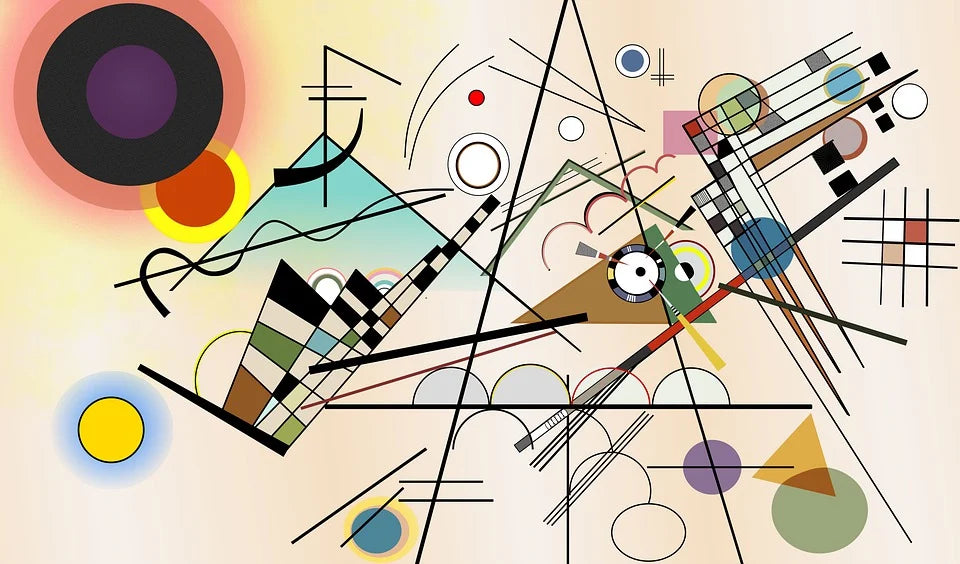The Bauhaus School of Art

The Staatliches Bauhaus was possibly the most influential school of modern art in the 20th century. Designating its functioning to be like that of a craftsman guild, this school of art gave equal importance to both fine and applied arts. Teachings of the professors encouraged the fusion of creativity and manufacturing, while prioritising elements of design. Consequently, this school gave rise to the Bauhaus Art Movement whose goal was the merger of all artistic disciplines. It is categorised by a geometric abstraction with few sentimental but no historical ties.
The school was also renowned for another trait, its faculty. Some notable instructors include Paul Klee, Joseph Albers, László Moholy-Nagy and its founder, Walter Gropius. It was in 1921, that Walter Gropius extended an invitation to Kandinsky for a position at the Weimar Bauhaus, who graciously accepted.
Who was Wassily Kandinsky?

There is no must in art because art is free.
-Wassily Kandinsky
Wassily Kandinsky was a Russian born painter who is today remembered as a pioneer of pure abstraction in modern painting. As an artist, he was driven to create art that conveyed spirituality of the universal kind. From an early age Kandinsky possessed a sensitivity toward sound and colours. His artistic predisposition was honed through many private lessons in music and drawing. Despite this, Kandinsky did not pursue an artistic profession until his 30s, instead he studied law and economics at the University of Moscow. He developed a successful career as an instructor in Law, which he gave up to finally enrol in an art school in Munich and the rest is history.
His Tenure at Bauhaus

At the Bauhaus Art school, Kandinsky trained pupils in preliminary courses such as abstract form elements and analytical drawing. He was the head of painting and later also directed the painting workshop. Already acclaimed as an abstract artist and theorist, Kandinsky chose to explore the spiritual qualities of colour and form during his tenure at Bauhaus. Under his expertise, students studied basic design and his newly developed colour theory based on elements of form psychology. Geometrized forms rose to the forefront of his pictorial vocabulary as observed in Composition viii which was painted during his time at Bauhaus.
Kandinsky remained at Bauhaus until it was forcibly shut down by the Nazis in 1933. The consequent dispersion of students and faculty extended Bauhaus influence among artisans, architects and designers across the world and even the next century. The Bauhaus approach to art and design had a prolonged influence in both Europe and the United States. Kandinsky and his work became a catalyst for expressive modern art of the 20th century and he remains permanently linked to the Bauhaus Art Movement.
Interesting Fact
Kandinsky was believed to be gifted with the ability of synesthesia, specifically Chromesthesia, the ability to perceive sound-to-colour. This resulted in a unique albeit involuntary experience of ‘hearing’ his paintings, where sound evoked a certain colour, shape, and movement.
Ruggism is launching a new collection inspired by the works of Kandinsky. The collection of selected 8 handmade rugs pays tribute to the artist’s use of cosmic elements, striking colours and eccentric forms. Check out the collection here.

